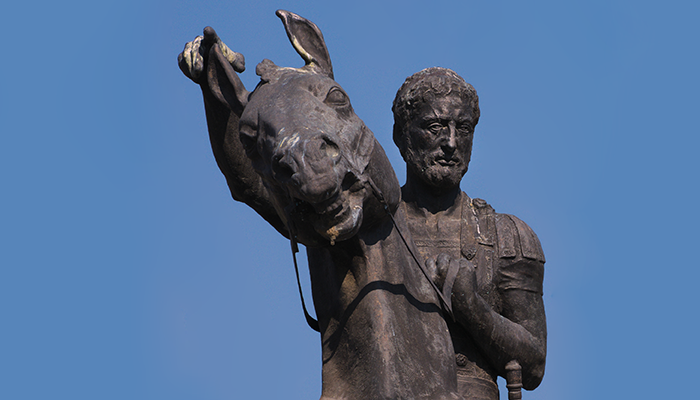
The loss of an eye is a highly unfavorable outcome in ophthalmology because it affects stereopsis, visual field, and overall quality of life. So, it is perhaps surprising to find that many of history’s most celebrated military commanders had monocular vision – typically the result of trauma.
Philip II of Macedon (circa 383-336 BC) is probably best remembered as the father of Alexander the Great (356-323 BC), but his personal military accomplishments are considerable. Philip is reported to have created the first “scientifically organized military force” in history, with coordinated use of infantry, artillery, and cavalry. The military historians R. Ernest Dupuy and Trevor N. Dupuy wrote that Philip’s army “probably could have been successful against any other army raised during the next 18 centuries – in other words, until gunpowder weapons became predominant” (1).
Philip is reported to have lost his right eye at the siege of the ancient city of Methone (Thessaly, now part of modern Greece) in 354 BC. He was struck by a projectile, most likely an arrow, shot from the walls of the city by a soldier named Aster. Philip removed the arrow himself and inspected the shaft, which was inscribed with both Aster’s name and his own. Philip then rallied his forces, conquered the city, and ordered Aster hanged (2).
An alternate version of this event takes place on a bridge spanning a river in Greece, although the exact location is uncertain. The setting of a bridge is important, because this would have reminded ancient people of the famous story of the Roman soldier Publius Horatius Cocles, who defended the bridge over the River Tiber (Pons Sublicus) against a vast army of Etruscans led by Lars Porsena in 508 BC. This battle has been memorialized in many forms, including Thomas Babington Macaulay’s 1842 poem “Horatius at the Bridge”. Horatius had already earned the agnomen “Cocles” (“one-eyed”) by losing an eye in a previous battle (3).
Philip is reported to have become oversensitive or “touchy” about his injury, becoming angry if he heard the words “Cyclops” or “eye” spoken. Cleisophos, a member of his Court, attempted to flatter Philip by wearing a bandage over one (presumably normal) eye.
Philip is generally depicted with a prominent scar related to his injury. This is consistent with the portrayals of other one-eyed individuals, including Federico III da Montefeltro, the Duke of Urbino (1422-1482), who was famously painted from the left side to hide his missing right eye. In contrast, Horatio Nelson (1758-1805) frequently claimed to have lost an eye in battle, but most paintings and sculptures of him show apparently normal eyes, suggesting that his injury was fictitious or at least exaggerated (4).
References
- RE Dupuy, TN Dupuy, The Encyclopedia of Military History: From 3500 BC to the Present (1986).
- AS Riginos, “The wounding of Philp II of Macedon: fact and fabrication,” J Hell Stud., 114, 103 (1994).
- FJ Ingelfinger, “Horatius Cocles at the bridge of publication,” Trans Assoc Am Physicians, 89, 53 (1976).
- SG Schwartz et al., “Famous monocular warriors,” Hist Ophthal Intern., 2, 161 (2018).
